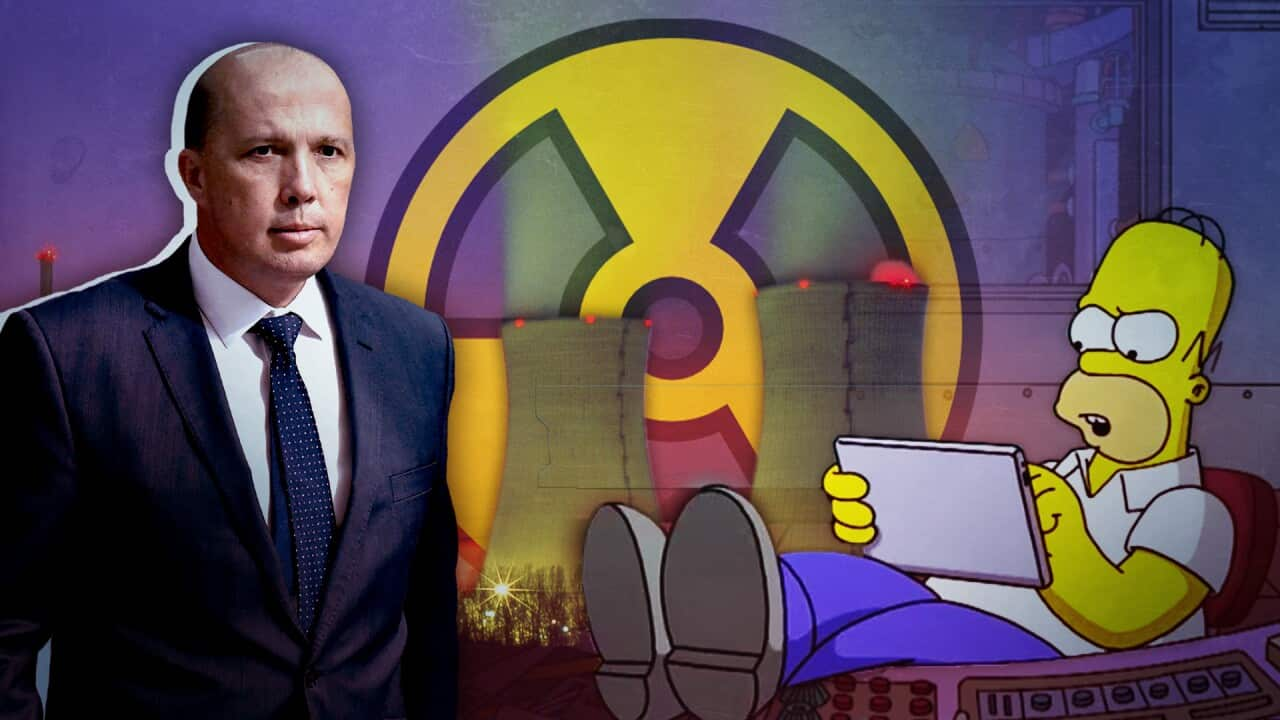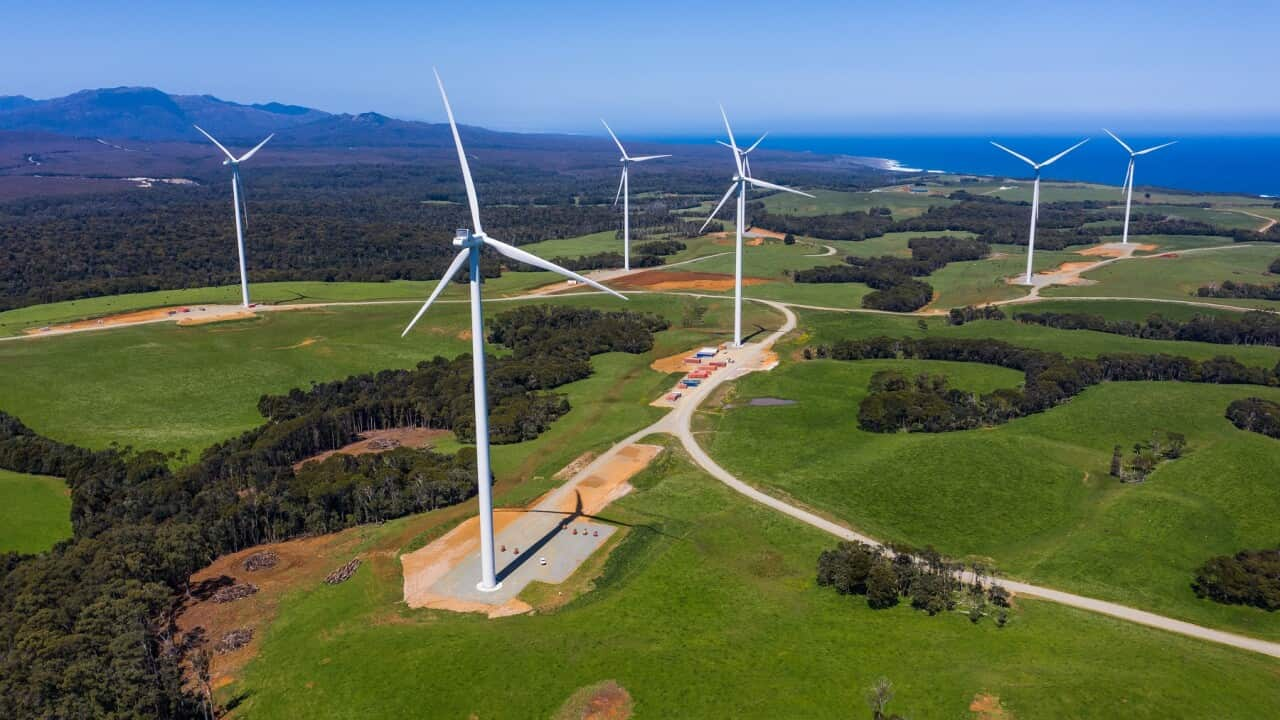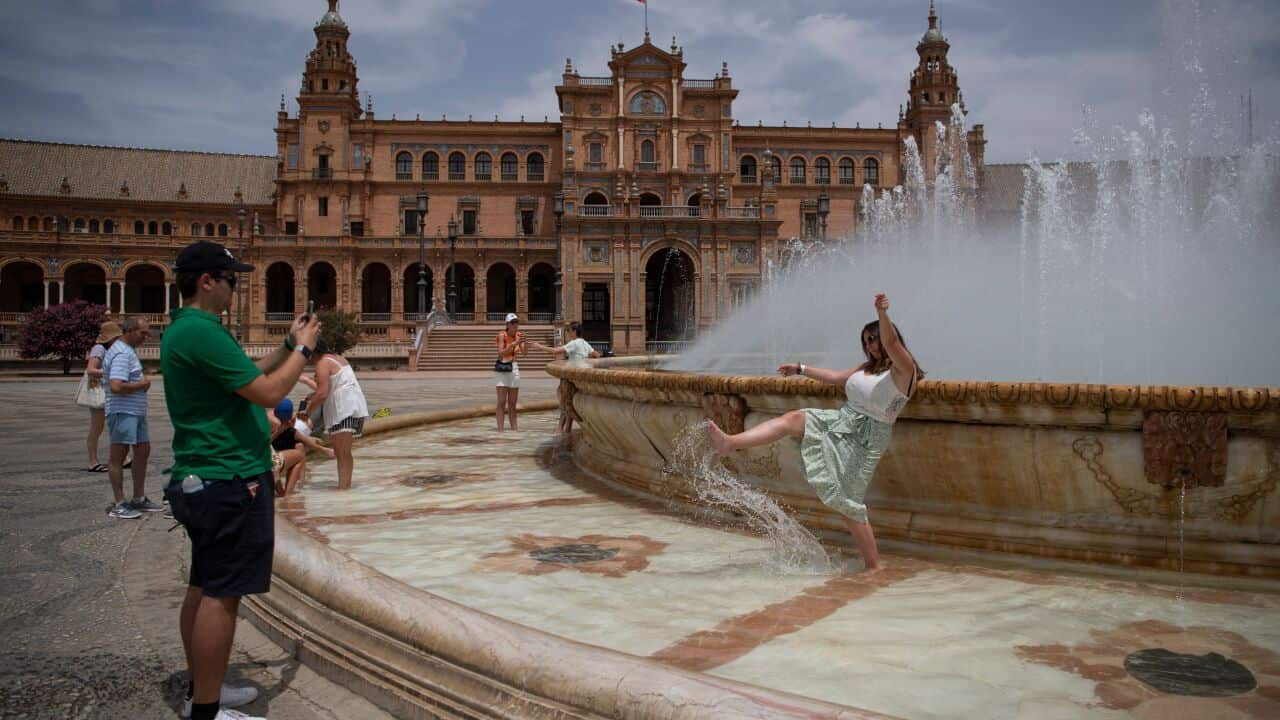Australia is treading a fine line between the urgent need to shore up the domestic electricity market, and longer-term commitments to address the climate change crisis.
There are fears that by this time next year, Australia won’t have enough gas left for households and businesses on the east coast. To prevent widespread blackouts in the middle of June, regulators had to force more coal-fired power back into the grid.
As Australia searches for ways to generate clean electricity on a nationwide scale, political attention has again turned to one of the most maligned power sources on the planet; nuclear energy.
What is nuclear energy?
Nuclear energy traditionally produces electricity through the splitting of radioactive isotopes of uranium or plutonium in a reactor - a process called nuclear fission.

Australia, like most countries, is on the hunt for new, renewable sources of energy. Source: AAP
Nuclear power produces no greenhouse gases or other significant emissions, but construction, transporting nuclear waste and decommissioning do.
Is Australia exploring nuclear power?
In one of his most significant policy moves as Opposition Leader, Peter Dutton has been agitating for a public discussion over nuclear power.
"It is high time that Australia had an honest and informed debate on the benefits and costs of nuclear energy," Mr Dutton said earlier this month.
He announced the Coalition would be formally reviewing Australia's potential to adopt "next-generation nuclear technologies".

France leads the top 10 countries most reliant on nuclear power. Source: SBS News
The United States is the largest producer of nuclear power on the planet, while France generates some 70 per cent of its electricity through nuclear.
Worldwide, there are mixed feelings on how much reliance should be placed on nuclear energy.

Opposition leader Peter Dutton has urged Australia to consider nuclear power. Source: AAP
Could Australia have its own nuclear industry?
Climate Energy Finance director Tim Buckley said building a homegrown nuclear power industry would never be a realistic option for a country like Australia.
He said it was extremely costly to build, required expertise Australia doesn’t have, and the public would never be comfortable with the storage of radioactive waste.
“It would be very charitable to think that Australia could have a nuclear power plant operational in the next 10 or even 20 years,” he said.
“I would absolutely bet against that probability. And the only way you could do it is with $20 billion or $30 billion of government funding underwriting the project.”

Nuclear power accounts for about 30 per cent of France's electricity.
“Australia is one of the biggest uranium produces in the world now, how can we be hypocritical and sell other countries our uranium and not burn it ourselves here,” Mr Buckley said.
“My answer to that is – because we don’t have a nuclear industry.”

Source: SBS News
“We've got no expertise in the construction of nuclear power plants, we've got no expertise in their operation.
“We don't have lots of nuclear engineers – they don't exist in Australia. So if we wanted to build a nuclear industry here, it's going to take a very large upfront cost."
Could Australia build a nuclear reactor?
Australia currently has only one nuclear reactor, which is a government-run facility at Lucas Heights in Sydney. That reactor doesn’t produce electricity – rather, it is mostly used to generate chemical elements used in medicine.
While Lucas Heights produces a comparatively tiny amount of nuclear waste, there has been fierce debate within Australia over where it should be stored. Mr Buckley said this would only intensify with commercial-scale nuclear energy.

China and India have the most nuclear reactors currently under construction. Source: SBS News
“It is clearly zero emissions - but it generates toxic waste, and there is no solution for that. There are a lot safer and cheaper alternatives.”
A 'new' kind of nuclear power?
Conventional nuclear power uses a process called fission. This is when large, unstable atoms such as uranium are split apart. Nuclear fission can produce massive amounts of low-emissions energy, but also results in significant quantities of radioactive waste.
Researchers have been investigating whether a different kind of nuclear power – called nuclear fusion – might instead be the solution.

The JET fusion reactor achieved a major milestone earlier this year. Source: ABACA / ABACA/PA
University of Sydney nuclear physicist Joe Khachan said fusion power basically replicated the process by which the sun generated energy.
“The reason you want to do it is because, unlike fission, which is the splitting of the atom, the product of fusion is helium - it's not a radioactive nucleus,” he said.
“So it's a clean energy source. The process does not produce greenhouse gases.
“The other benefit is that it is sustainable over a very, very long time. And it's very dense - you can have a lot of power in a very small space, day and night, regardless of geography, regardless of weather conditions.”
Earlier this year, scientists at the JET nuclear fusion lab in Oxfordshire, England, achieved a major fusion breakthrough. The experiment only generated about 59 megajoules - enough power to boil 60 electric jugs - but it was hailed as a crucial proof of concept.

Construction on the ITER fusion reactor in France is scheduled to be completed in 2025. It will be the largest fusion reactor in the world. Source: Supplied / ITER
Dr Adi Paterson is the former chief executive of the Australian Nuclear Science and Technology Organisation – one of Australia’s largest publicly-funded research bodies. Now he is working with an Australian start-up called HB11, which aims to commercialise nuclear fusion technology.
“I think people are starting to get quite excited about it,” Dr Paterson said.
“The process of producing electricity can be more efficient, and the great benefit is, there are no waste products.”
While nuclear fusion is incredibly promising, it has also proved to be technically frustrating. Researchers are still struggling to create conditions in which nuclear fusion produces more electricity than it requires to run.
The world’s largest nuclear fusion reactor is currently under construction in southern France, at a cost upwards of $21 billion.
Some 35 countries, including Australia, have been involved in the construction of the ITER reactor, one of the most ambitious energy projects in the world. Plagued by construction delays, it is now expected to start powering up in 2025.
Mr Buckley said nuclear fusion could be useful in the long term, but would not be ready soon enough to solve the immediate problems caused by global warming.
“When I was in nappies 55 years ago, nuclear fusion was a decade away from commercialisation,” said Mr Buckley.
“And now - 55 years later - it's still just a decade or two away from commercialisation.”














